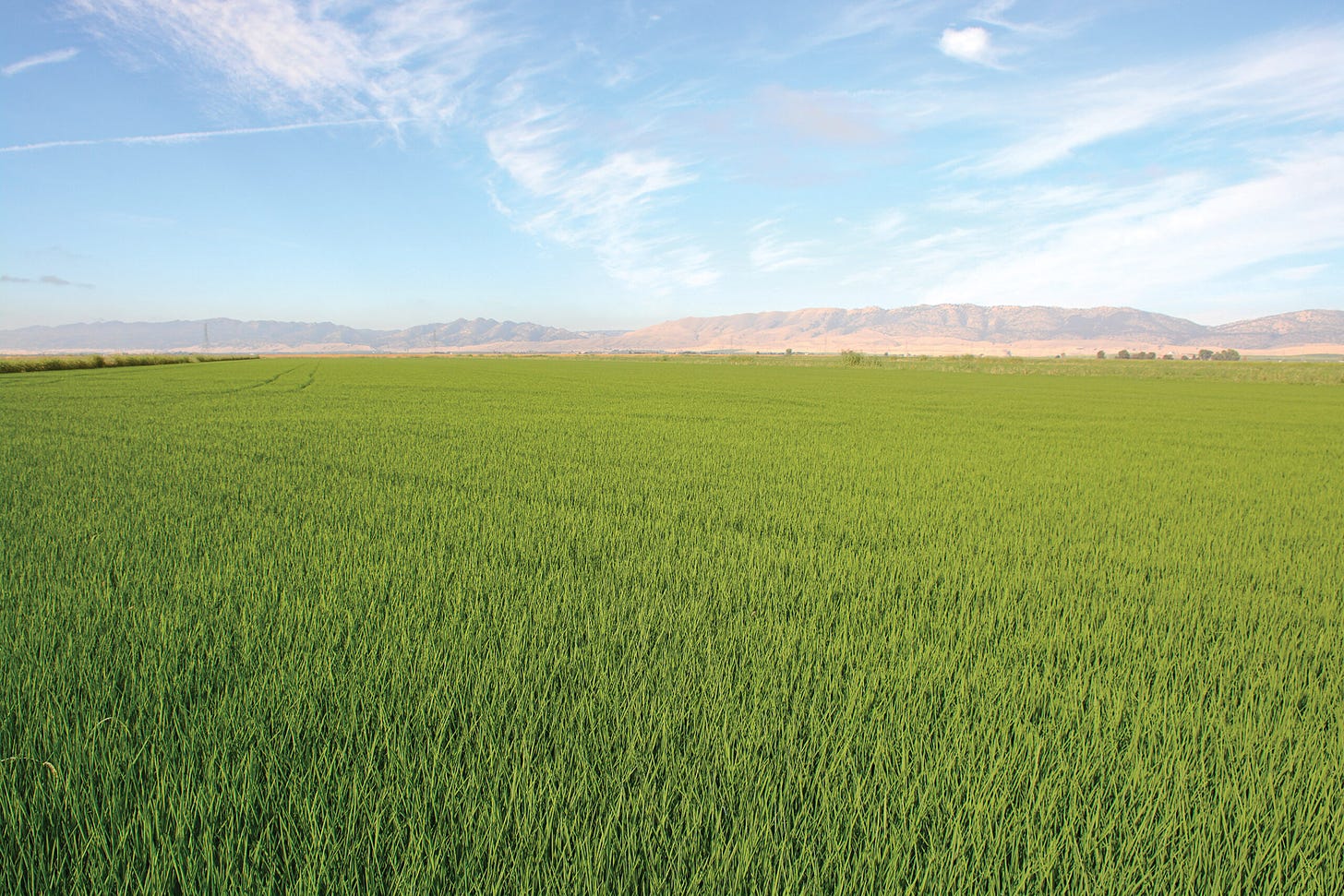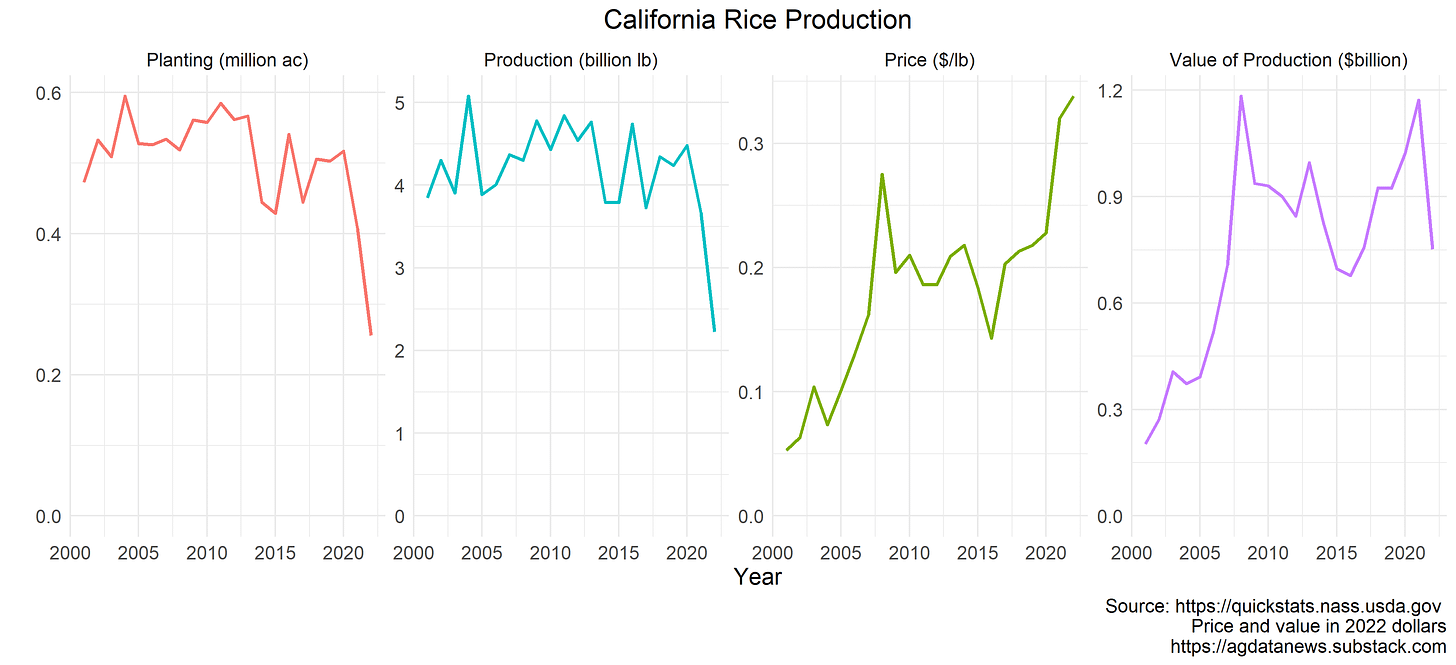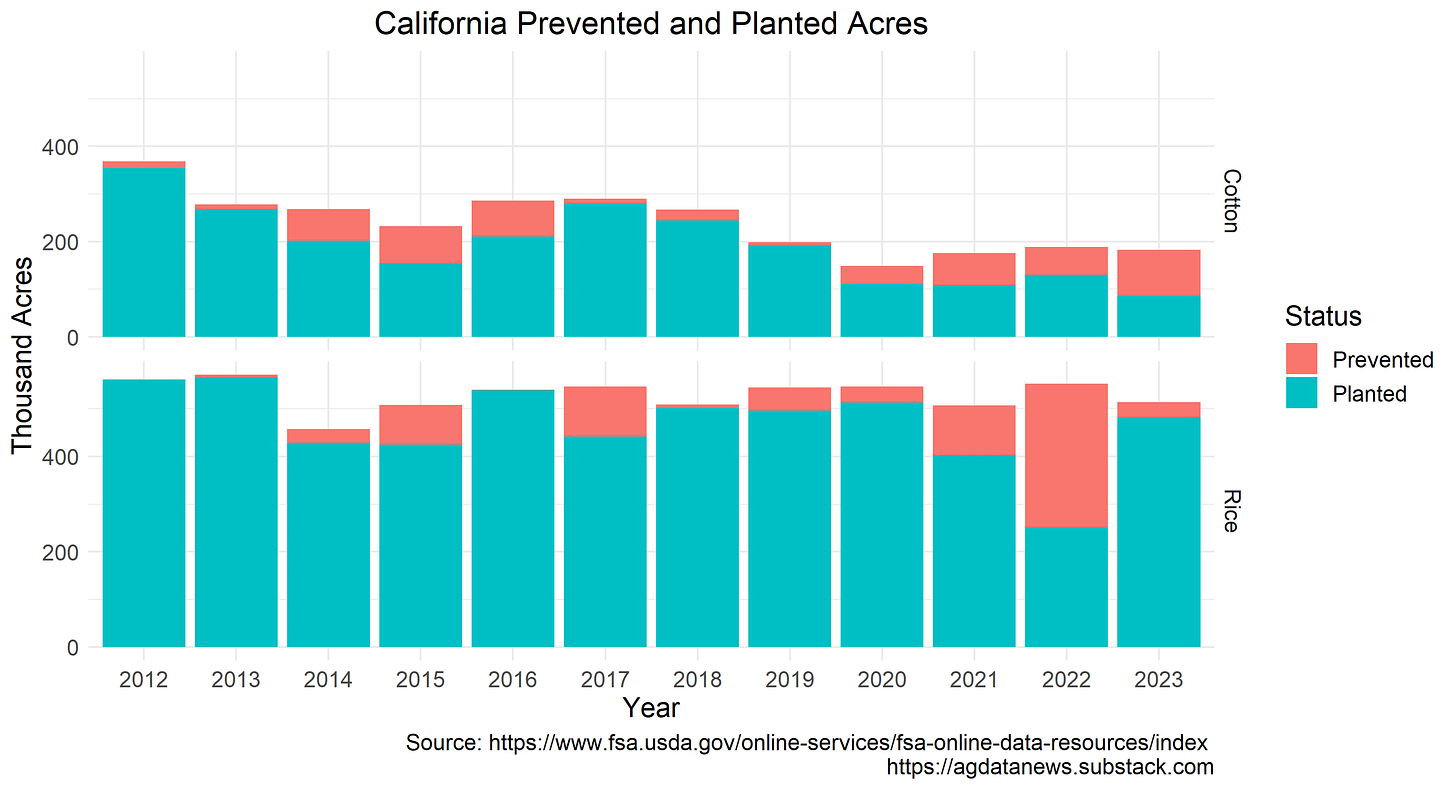California Rice is Back
Last year, California farmers planted 50% fewer rice acres than they had planted in 2020. High prices offset some of the decline in acreage, so in dollar terms production was down only 25% from 2020. The drop in acreage stemmed from a multi-year drought that reduced the amount of available water for irrigation
California rice farmers reported being unable to plant 300,000 acres in 2022 that they had intended for rice but couldn't because of a lack of irrigation water. Assuming a yield of 8800 lb/acre and a price of 33c/lb, they lost $871 million in revenue. Some of the losses were covered by insurance. California rice farmers received crop insurance payouts $350 million last year for losses due to "failure of irrigation supply".

How have California rice acres rebounded after heavy winter rains ended the drought?
Earlier this month, the USDA published the year's first data on which crops farmers have planted this year. The data contain two pieces of information that indicate how the drought affected land use. First, farmers report prevented-planting acres, which is land they had intended to plant a crop but were prevented from doing so by a natural disaster, such as inadequate irrigation water. Second, farmers report fallowed or idle acres, which is cropland not planted to a crop.
The reported number of unplanted crop acres in California is 267,000, which is less than half the number from 2022 and is back down to 2020 levels. The report lists 32,000 prevented rice acres, down from 300,000 last year. The number of prevented cotton acres has increased to 96,000 this year, many of which are buried under Tulare Lake.
These data are provisional. They will be updated each month until the final numbers are released in January. The final numbers have exceeded the provisional every year since 2012. In the previous drought in 2014-15, the provisional estimates were revised upwards by about 200,000 acres, but there was only a minor revision in 2022.
With the drop in prevented planting, rice acres are back up to their level for most of the last decade. The drought did not cause a permanent shift out of rice (this time). Cotton acreage, on the other hand, continues to decline.
California is the second largest rice-producing state behind Arkansas, producing about $900 million in production value per year. Most California rice is medium-grain Japonica for use in Asian and Mediterranean dishes such as sushi, paella, and risotto. Other US states produce mostly long-grain rice.

In a typical year, about half of California's rice production is exported. In the 2022/23 crop year, US exports of medium and short grain rice are down by about 400,000 metric tons (880 million pounds, milled) from their average over the prior decade. Exports were also low in 2021/22.

The growth of almonds and pistachios, along with the increasing scarcity of water, has been pushing crops like alfalfa, cotton, and wheat out of the state.
Rice continues to be more resilient.
I made some of the figures using this R code and pulled others from our data apps. Use these apps to view or download agriculture data from the comfort of your web browser.







